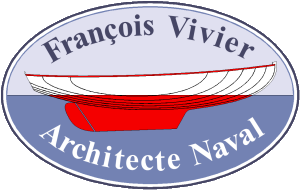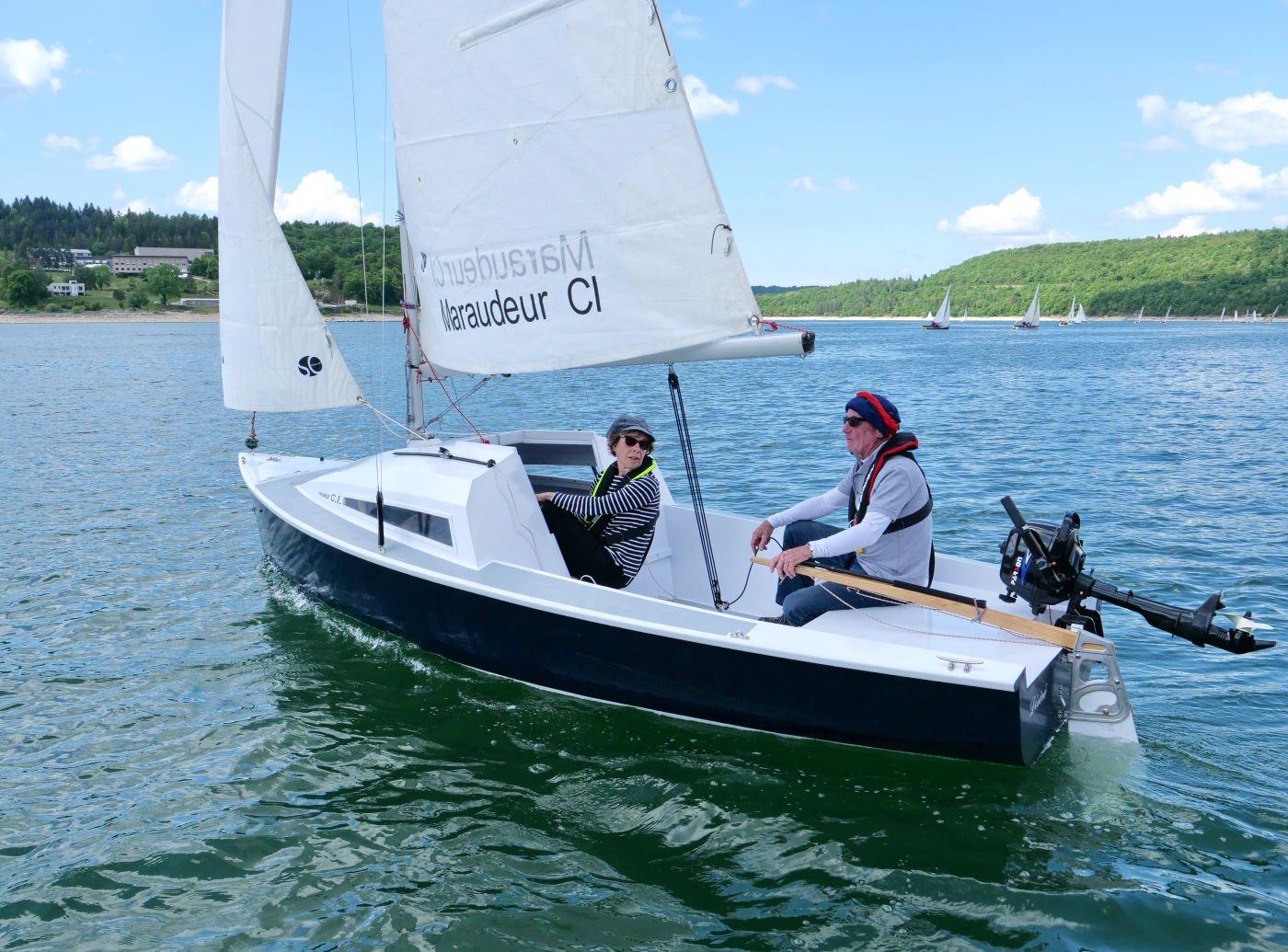| Hull length / waterline | 4.83 / 4.63 m | Sail area | 15.3m² |
| Breadth / waterline | 1.71 / 1.31 m | Outboard | 2 à 4 hp |
| Draught | 0.31 / 1.13 m | Design category / Crew | C3 / D4 |
| Light weight | 325 kg | Building time (with kit) | 550 hours |
Jean-Jacques Herbulot (1909-1997) and has drawn more than 90 sail boats. The most popular are the Vaurien, a 4 m dinghy, with 35 000 units built and the Corsaire, a 5.5 m long pocket cruising boat, with 3 000 units built. Most of his designs are dedicated to plywood construction and Herbulot may be considered in France as the father of modern plywood construction in the post world war 2 period. He has also initiated the use of modern methods to develop amateur construction based on the use of polyurethane glue and sheathing (in a pre-epoxy period). Herbulot was an excellent racing yachtsman. He has been France champion in the Star class and has represented France at the Olympic games of Los Angeles in 1932, Kiel in 1936, Torquay in 1948, Melbourne in 1956. He was also associated, as a naval architect, to the famous Glénan sailing school and many of his designs were intended to be used as training sail boats. Herbulot boats were always very seaworthy and perfectly suited for extensive sailing.
Herbulot had drawn a dinghy, the Flibustier, which was not very successful. And then came the idea to add a small cabin. The Maraudeur was born. This happened in 1958. The design was very innovative, with a hull made each side of two developable plywood strakes and a cold moulded rounded bilge. I have myself used a similar method on my Meaban, Pen-Hir and Toulinguet. The coachroof was made of GRP with a very particular bubble shape.
Maraudeur was both a racing boat and a camping boat, very light (about 320 kg) and therefore easy to trail with a small car. This is probably the key of the success of this design. Today, yearly meetings and regattas are still organised with a very good spirit by a dynamic owner’s association. After the first wooden units, the boat has been built in grp by several builders. But these last years, less and less new buildings were ordered and the association was looking for a good way to give a new momentum.
Professional construction, in wood as well as in grp, is presently very expensive. Therefore, the association decided to work out a new version, designed to make construction by home builders as easy as possible. Another target was to comply to present safety regulations, in particular for stability and buoyancy.
The association asked me to make this design developments. The request was also to get a beautiful boat, closer to the original than some grp versions, to keep the excellent behaviour of the wooden version, in particular in light breeze. Of course, the new Maraudeur has to keep the same hull lines, the same marconi rig, the same weight balance than the original design. It has also to comply with the precise class rules. However, these rules give a wide freedom concerning the deck arrangement and fittings. Owners have to keep the ability to customize. Overall, the spirit of Herbulot design has to be respected, which has not always been the case for other revisited Herbulot boats.
My proposal was to make profit of modern wooden boat technology, in particular NC cutting and epoxy systems to make construction easier. A first step was to check the ability to comply with EC rules and in particular ISO 12217 on stability and buoyancy. Practically, we had to find a simple way to ensure capability to recover the boat when completely swamped and capsized at 180°. A second step was to draw a new deck plan. The original coachroof was not satisfactory as it makes difficult to raise the mast and had to be replaced by something else. The third step was to design the new building method. Of course we keep the cold moulded bilge, made with two layers of 3 mm plywood laid over stringers. The coachroof is made in plywood using the stitch and tape method. The cast iron ballast keel, with a slot for the steel plate centreboard, had to give way to another solution. Today, cast iron parts are very expensive and actually mostly imported from China. We decided to make a box keel, built in plywood with the stitch and tape method, and filled up with lead and epoxy as already done in grp hulls. The centreboard case design has been modified to allow easy dismantling of the centreboard from inside. The drawings show how this new Maraudeur looks like.
Both myself and the association hope this new Maraudeur will allow a new and long life to this very attractive little sailboat.



Steve Hendricks –
In Seattle I owned and sailed an original Marauder in 1970’s. It was a wonderful boat and I hope to build one in the near future.
Steve
François Vivier –
The study plan is an excerpt of the plan itself. Therefore I will be able to propose a study plan in English only if I have an order for the plan in English. In the meantime, I may answer any question you may have.
LEONTARIS SPIROS –
HOW CAN I GET A STUDY PLAN FOR MARAUDER CL IN ENGLISH